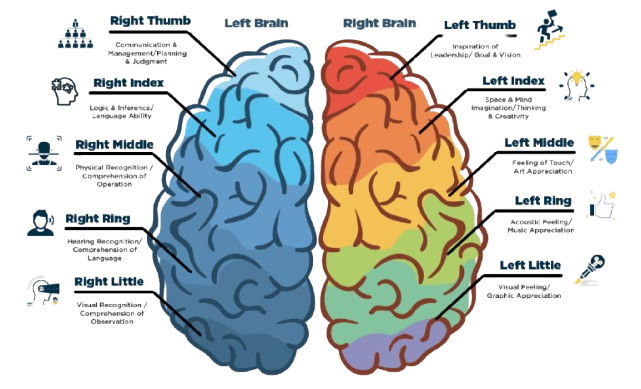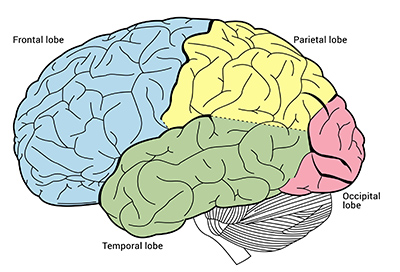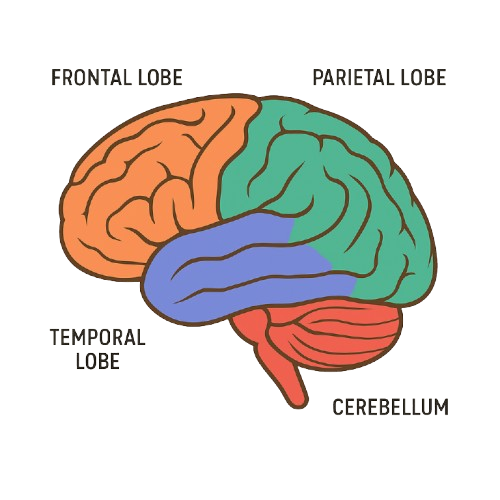
DMIT ( Dermatoglyphics Multiple Intelligence Test)
It is a scientific assessment method that studies the patterns of fingerprints to understand a person’s inborn potential, personality traits, learning style, and multiple intelligences. Here’s a clear breakdown 👇
- Dermatoglyphics is the scientific study of fingerprints, which are formed between the 13th and 19th week of pregnancy. Since fingerprints and brain lobes develop simultaneously, their patterns are believed to reflect the brain’s genetic blueprint. DMIT uses this correlation to analyze brain dominance and potential abilities.
- The test claims to assess: Inborn intelligence types (linguistic, musical, logical, kinesthetic, interpersonal, etc.) Learning style (visual, auditory, kinesthetic) Personality traits and behavior Strengths and areas of improvement Career inclinations t
- DMIT is commonly used for: Children (age 3+) – to guide learning methods and talents Students – for career and stream selection Adults – for personality and professional development Corporate teams – for team building and leadership analysis
- Fingerprints are scanned or captured digitally. The data is analyzed using specialized software. A detailed report (often 11–77 pages) is generated. A trained counselor interprets the report for the client.
300+ Appointment Booking Confirm for this Week
Specialists
Happy Patients
Winning Awards
DMIT For All Ages
DMIT for Children (Age 1 to 10 years)
Every child is born unique with their own natural talents and learning style. DMIT helps parents understand their child’s inborn potential, learning ability, and behavioral pattern at an early age. With this knowledge, parents can choose the right environment, teaching methods, and activities to nurture overall growth and confidence from the beginning.
DMIT for Students (Age 11 to 18 years)
During the school years, students face confusion about subjects, interests, and future goals. DMIT provides valuable insights into their multiple intelligences, strengths, weaknesses, and learning styles. This helps students choose the right stream (Science, Commerce, or Arts) and develop skills that align with their natural abilities — reducing stress and improving academic focus.
DMIT for Career Guidance (Age 17 & Above)
As career decisions shape one’s future, understanding personal strengths is essential. DMIT for career guidance helps identify the most suitable career paths, professional roles, and work environments based on an individual’s personality type and innate intelligence pattern. It’s ideal for students entering college, job seekers, or professionals looking for career satisfaction and success.
DMIT Test for Adults (Age 25 years & Above)
At every stage of life, self-awareness is the key to personal and professional growth. The DMIT Test for Adults helps individuals understand their behavioral patterns, decision-making style, emotional intelligence, and hidden talents. It guides in improving relationships, communication skills, and confidence, leading to a more balanced and fulfilling life.
DMIT Test for Employees & Corporate HR
In the corporate world, productivity and teamwork depend on understanding people. The DMIT Test helps HR professionals and employers identify employees’ strengths, leadership traits, stress-handling capacity, and compatibility. It assists in team building, role alignment, and employee motivation, making it a powerful tool for organizational development and human resource planning.
DMIT Training Course for Schools, Colleges & Institutions
ThinkPrints offers certified DMIT Training Courses for teachers, counselors, and institutions who wish to integrate scientific talent assessment into their system. The training helps educators learn how to analyze reports, interpret results, and counsel students or parents effectively. Institutions can use DMIT as a modern approach to student development, career guidance, and talent mapping.

🧠 Brain Lobes and Their Functions
1️⃣ Frontal Lobe
Located in the front part of the brain. Responsible for thinking, planning, reasoning, decision-making, creativity, emotional expression and leadership. Linked to personality and self-control — dominant in analytical and strategic thinkers.
2️⃣ Parietal Lobe
Found near the upper back of the head. Handles sensory input (touch, pressure, temperature), spatial orientation and coordination. Important for visualization, logical reasoning — strong in engineers, mathematicians and architects.
3️⃣ Temporal Lobe
Located near the ears on both sides. Responsible for hearing, memory and language comprehension. Controls emotional responses and musical intelligence — common strength in expressive or musically gifted people.
4️⃣ Occipital Lobe
Found at the back of the brain. Responsible for visual processing and recognition — interpreting color, shape and motion. Dominant in visual learners, designers, artists and photographers.
5️⃣ Cerebellum (Limbic Region)
Located below the occipital lobe. Controls balance, posture, coordination and fine motor skills; involved in habit formation and subconscious activities. Prominent in athletes, dancers and those with excellent hand–eye coordination.
⚖️ Left Brain vs Right Brain
🧩 Left Brain – Logical & Analytical Side
Processes information sequentially and logically. Strong in language, reasoning, mathematics and analysis. Prefers facts, structure and order. Typical traits: organized, disciplined, practical, methodical.
🎨 Right Brain – Creative & Intuitive Side
Processes information holistically and intuitively. Strong in imagination, visualization, emotions and creativity. Prefers art, music and innovative thinking. Typical traits: emotional, spontaneous, artistic, empathetic.
⚖️ Left Brain vs Right Brain – Lobe-Wise Functions
Understand how each side of your brain contributes to logic, creativity, emotion, and decision-making — organized by brain lobes.
| 🧠 Brain Lobe | 🧩 Left Brain Functions | 🎨 Right Brain Functions |
|---|---|---|
| 🌿 Frontal Lobe | Logical thinking, planning, reasoning, analytical problem-solving, goal setting, and self-discipline. | Creative thinking, emotional expression, intuition, imagination, and innovation. |
| 📐 Parietal Lobe | Numerical analysis, logical reasoning, sequential understanding, and symbolic recognition (reading & writing). | Spatial awareness, 3D visualization, pattern recognition, and artistic skills. |
| 🎵 Temporal Lobe | Language comprehension, verbal memory, phonetic processing (words, speech). | Musical intelligence, rhythm, tone recognition, and emotional memory. |
| 👁️ Occipital Lobe | Visual decoding, precision recognition, and structured image interpretation. | Visual imagination, creativity, design, and color perception. |
| ⚙️ Cerebellum | Motor control, precision tasks, habit formation, and coordination stability. | Balance, rhythm, flow of movements, and subconscious body awareness. |
🧠 Summary
Left Brain Dominance → Analytical, logical, structured, and language-oriented.
Right Brain Dominance → Creative, emotional, imaginative, and intuitive.
In DMIT, both hemispheres are analyzed to understand whether an individual is more logical (left-dominant), more creative (right-dominant), or balanced — helping in identifying learning styles and career recommendations.
🧠 Types of DMIT Tests
DMIT services organized by age group and by purpose — each card explains what the test focuses on and who it benefits.
1️⃣ Based on Age Group
Infant DMIT (1–4 yrs)
Early developmental insights — learning tendencies, temperament, and foundational personality traits to support nurturing & environment choices.
Children DMIT (5–10 yrs)
Learn a child's natural learning style (visual, auditory, kinesthetic), innate talents and best approaches to nurture confidence and aptitude early on.
Student DMIT (11–18 yrs)
Multiple intelligence profiling, subject strengths and stream guidance (Science, Commerce, Arts) to reduce confusion and boost academic focus.
Career DMIT (17+ yrs)
Aptitude and dominance analysis for course & career selection — matches natural brain strengths to job roles and study paths.
Adult DMIT (25+ yrs)
Self-awareness analysis — behavior patterns, decision style, emotional intelligence and hidden talents for personal & professional growth.
Corporate / Employee DMIT
Team & leadership profiling, stress-handling capacity, role alignment and team-building insights for HR & organizational development.
2️⃣ Based on Purpose / Application
Personality Assessment
Analyze behavior, communication style, emotional reactivity and interpersonal tendencies — valuable for counseling and self-understanding.
Learning Style Analysis
Identify visual, auditory or kinesthetic preferences so educators and parents can tailor teaching methods for better outcomes.
Multiple Intelligence Analysis
Map strengths across Gardner’s intelligences (linguistic, logical, musical, spatial, kinesthetic, interpersonal, intrapersonal, etc.).
Career Guidance
Match brain potential and natural tendencies to suitable career paths, course choices, and workplace environments.
Relationship / Compatibility
Evaluate interpersonal dynamics for families, couples or teams — helps build better communication and compatibility strategies.
Personal Growth & Counseling
Use DMIT insights for confidence-building, emotional balance, and targeted counseling plans for long-term growth.
🧠 Theory of Multiple Intelligences
Every human being is born with all nine types of intelligences, each existing in different proportions. This unique combination forms our individual intellectual profile and shapes how we learn, think, and grow.
By recognizing and nurturing these intelligences, we can enhance education, personal growth, and creativity. Each intelligence is linked to specific regions of the brain and functions in harmony with the others.
🌟 The 9 Multiple Intelligences
Logical–Mathematical Intelligence
(Reasoning Smart)
Ability to think logically, analyze problems, and understand numerical patterns.
Examples: Scientists, Engineers, Analysts.
Linguistic Intelligence
(Word Smart)
Skill in using language effectively — speaking, reading, and writing.
Examples: Writers, Teachers, Public Speakers.
Musical Intelligence
(Music Smart)
Sensitivity to sound, rhythm, pitch, and melody.
Examples: Singers, Composers, Musicians.
Naturalist Intelligence
(Nature Smart)
Ability to recognize and work with nature and living things.
Examples: Biologists, Environmentalists, Farmers.
Existential Intelligence
(Philosophy Smart)
Deep thinking about life, existence, and the universe.
Examples: Philosophers, Thinkers, Spiritual Leaders.
Intrapersonal Intelligence
(Self Smart)
Awareness of one’s own emotions, goals, and motivations.
Examples: Psychologists, Counselors, Life Coaches.
Bodily–Kinesthetic Intelligence
(Body Smart)
Skill in coordination, movement, and expressing ideas through body actions.
Examples: Athletes, Dancers, Surgeons.
Interpersonal Intelligence
(People Smart)
Ability to understand and interact effectively with others.
Examples: Leaders, Salespersons, Teachers.
Spatial Intelligence
(Picture Smart)
Capacity to visualize, imagine, and interpret spatial relations and images.
Examples: Architects, Artists, Designers.
Each individual’s combination of these intelligences is unique — DMIT helps decode this balance to guide education, personality growth, and career direction.
Get in Touch with us
Lorem Ipsum is simply dummy
Address
234 Oak Drive, Villagetown, USA
Call Us
Send us a Mail
Opening Time
Mon-Thu: 8:00am-5:00pm
Fri: 8:00am-1:00pm

